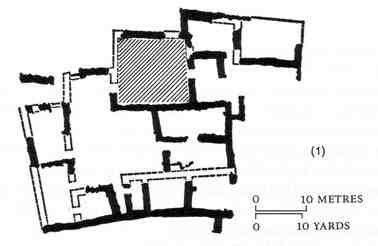This site provides something different: many sites and books provide a brief summary of the reading – so that people read out or have in their pew sheet an outline of what they are about to hear. They are told beforehand what to expect. Does this not limit what they hear the Spirit address them? This site provides something different – often one cannot appreciate what is being read because there is no context provided. This site provides the context, the frame of the reading about to be heard. It could be used as an introduction, printed on a pew sheet (acknowledged, of course), or adapted in other ways.
Joshua 24:1-3a, 14-25
Some scholars point to treaties between two equals or unequal (suzerainty) of the 14-13th centuries BCE. Most of the elements are found here: naming, description of relationship, conditions, how the treaty will be preserved, witnesses (deities), curses and blessings. Covenant theology, however, does not appear to have been well established in Israel until the Deuteronomists (8-7th century BCE). Land-grant treaties of Assyrians had land entrusted to individuals to use. Deuteronomistic terminology has been clear from Joshua’s “final speech” in chapter 23.
Wisdom of Solomon 6:12-16
The Wisdom of Solomon was probably written in Egypt (most likely Alexandria). It was written in Greek by a hellenized Jew. Scholars vary in dating it from 250 BCE to 150 CE. The original readers would have recognised the goddess Isis in the images of Lady Wisdom. The significance of Isis extends beyond this metaphorical influence into iconographical influence as shown in the image here of Isis and Horus, a bronze Egyptian statue from the Ptolomeic era, compared with Our Lady of Perpetual Help with Jesus.
Amos 5:18-24
Amos probably lived a s a prophet in the 750s BCE. His oracles appear edited during the Babylonian exile (587-539BCE). This is the first biblical mention of the “Day of the Lord”.
1 Thessalonians 4:13-18
Two decades after Jesus’ death and resurrection Paul still clearly indicates his conviction he will be alife when Jesus returns (verse 17). Paul is addressing the concerns of those alive as they see loved ones dying and Christ not yet returned.
Matthew 25:1-13

The floor-plan of the first century house of St Peter in Capernaum (illustrated from The Holy Land: An Oxford Archaeological Guide (Oxford Archaeological Guides)
“The city’s basalt houses are grouped around two large courtyards, one to the north and the other to the south. One large room in particular, near the east side and joining both courtyards, was especially large (sides about 7.5 meters long) and roughly square. An open space on the eastern side contained a brick oven. A threshold which allowed crossing between the two courtyards remains well-preserved to this day.”Wikipedia (link off this site) In such a complex lived Jonah, his sons Andrew and Simon (Peter), Simon’s wife, possible children, mother in law. The patrilocal practice of marriage meant that the bride moved in to the home prepared by the groom in or adjacent to that of his father. The marriage celebration includes the groom with his relatives going to the bride’s family home to bring her to his home where the celebration continued. The “virgins” of the story (“bridesmaids” NRSV) were young nubile teenagers, his sisters and cousins. The “lamps” were flaming torches which helped one see outside. In this Mediterranean society, whenever the significant person arrives is “on time”.
